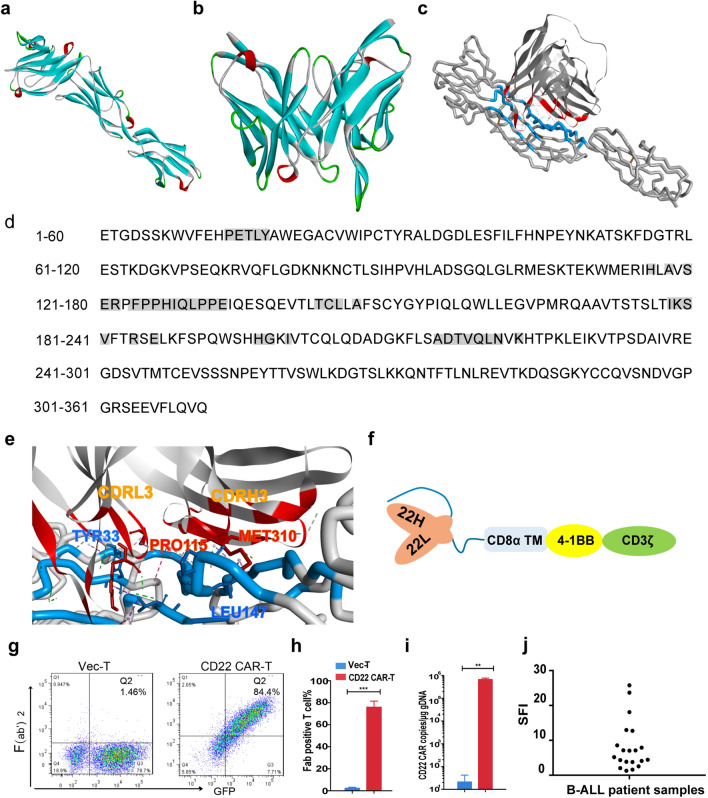Fig. 1.
Construction and structural characteristics of a novel CD22 CAR derived from HIB22. a Homology models of hCD22 (ECD, domains 1–3). b Homology models of HIB22 scFv. c Docking mode of HIB22 scFv with CD22(ECD, domains 1–3). Blue, hCD22 ECD epitopes; Red, HIB22 epitopes. d Sequence of hCD22 (ECD, domains 1–3). Gray background, amino acids as epitopes predicted involved in binding with hCD22 (ECD, domains 1–3). e Partial interaction mode between HIB22 scFv and hCD22 (ECD, domains 1–3). Blue, hCD22 (ECD, domains 1–3) epitopes and presentative amino acids involved in non-bond interaction. Red, HIB22 scFv epitopes and presentative amino acids involved in non-bond interaction. f Schematic of CD22 CAR construct. CD8α TM, CD8α transmembrane domain. CD3ζ, CD3 zeta domain. g Expression of CAR on T cells surface. The CD22 CARs or empty vectors were transduced to T cells to obtain corresponding CD22 CAR-T cells or control VEC-T cells. CAR expression was analyzed by FACS. h, i Collective analysis of expression of CAR h and copies number of CAR transduced to genomic DNA i from 3 donors. j SFI (specific fluorescence index) of CD22 expression on B-ALL patient samples. The SFI is calculated as follows: SFI = (MFI of specific antibody—MFI of isotype control)/MFI of isotype control, where MFI is the mean fluorescence intensity

